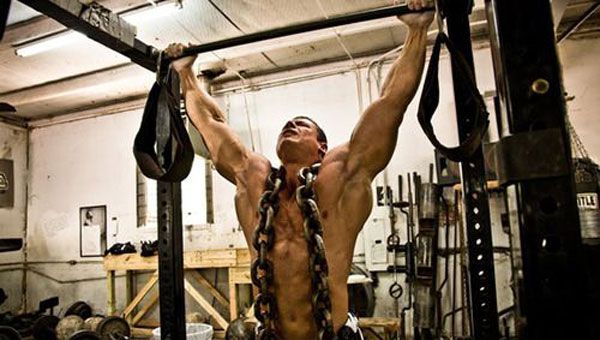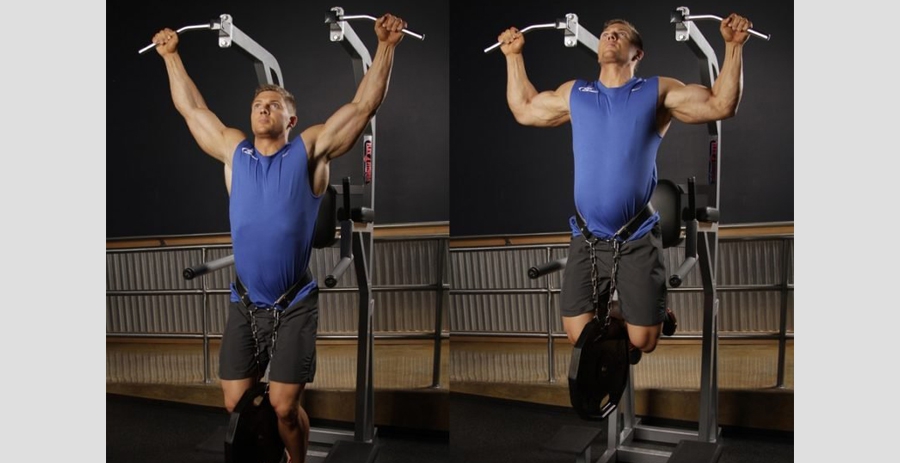A basic exercise for the back muscles is pull-ups with extra weight. This is an excellent multi-joint exercise that allows you to effectively work the back muscles.
These are mainly the broadest muscles, but others are also involved. The arm muscles are also additionally involved..
CONTENTS
2. Benefits
3. Types
О
The weighting allows you to increase the effect of pull-ups, which, in addition to growing your back muscle mass, allows you to become stronger. This can have a positive effect on the results in other important basic harnesses.
The following muscle groups are engaged in more detail:
- Broadest muscle
- The muscles that straighten the spine.
- Biceps, both bundles.
- Chest muscles.
- Muscles of the tarsal, metatarsal, biceps, and triceps brachii.
- Muscle that lifts the scapula.
- Upper, lower parts of the trapezius muscle.
- Elbow extensor and wrist flexor.
The beauty of this exercise:
The main advantage is that it gives excellent results with a minimum of equipment. You can easily perform it at home. For this purpose, first of all, you will need a high-quality barbell, which should be well anchored.
Then the weight itself, it can be weights, or just a disc from the barbell, suspended from the safety belt, for example with a chain. There are also special belts designed for this kind of training, they can be used both for training on the horizontal bar and for training on the uneven bars with the weight.

Performing pull-ups with additional weight you can use several options, which differ in the type of grip.
Execution options:
Wide forward grip - emphasis on the width of the back, the maximum load on the outer part of the broadest muscle, trapezius, large round, rear delts;
Reverse grip: in addition to the latent muscles biceps muscles are actively worked out, as well as pectoral muscles are included. This is a relatively easier variant of pulling-up, compared with the usual, i.e. direct grip. It can also be narrow, medium or wide. The difference will be in the degree of impact on the biceps, broad and pectoral muscles. Another point is that if you focus on flexion of arms, biceps will receive a large load, and if you focus maximum attention on the movement of the shoulder joint, the maximum load will fall on the broadest muscles.
Parallel grip - working the lower and middle sections of the broadest muscle, brachialis as well as engaging the biceps. This option is also a power grip, so it is optimal to use weights either with this grip or reverse grip. Pulling up with parallel grip can be done along the bar, on two parallel bars (bars), on the bar with a V-shaped grip.
You should feel your muscles, look at your feelings and choose the best option for you or alternate types of pull-ups.
Technique of execution
Whichever variant you use, the movement itself is performed in approximately the same way
- After a thorough warm-up fasten the weight on the belt, or put on weights or backpack
- Grip the bar with the right grip and take the starting position in the hanging position
- Without jerks perform pulling up to the level of chin or higher
- Return to the starting position
Errors:
When working with weights it is very important not to jump on the bar and it is even more important not to jump off sharply and slide down smoothly.
Other than that:
- Do not sway or jerk to complete the movement. Perform the movement smoothly in order to pump the working muscles as much as possible.
- Try to reach for the bar with your chest more than your chin.
- Slouching at the top, which will not allow the muscles of the back to contract.
- The elbows go forward, not backward, thus loading the biceps, not the back.
- Incomplete amplitude of execution.
It is desirable to put this exercise in the middle or at the end of your back training, after the main exercises with the barbell.



